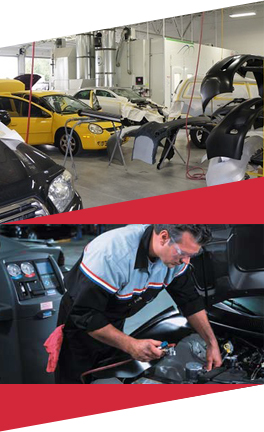Checking Your Oil, Tires, & Coolant
A bit of caution: Always check your fluids and tire pressure when your car is cold (i.e. has not been running for at least one hour). Not only does temperature affect the level of fluids in your engine, but checking these levels could also lead to injury if you contact hot parts of the engine.
Check Your Tires
The air pressure inside a tire is more important than many people think. Too low or too high an air pressure can result in rapid and uneven wear and possibly failure of the tire. Here are a few tips to bear in mind for tire maintenance:
- Always check your tire air pressure before going on a long trip-an inexpensive tire pressure gauge will cost only 4 or 5 dollars at a local auto parts store.
- Check your tire air pressure in the morning after the car has been sitting overnight.
- Always check your tire air pressure when your tires are cool – tires heat up from driving, and the air pressure changes inside them.
- While you are checking the air in your tires, look at the condition of the tread. The best indication of tire wear is to look for the tires Wear Bars. Wear Bars are small ridges of rubber that are set into the groove of a tire.
Check Your Oil
Oil is the lifeblood of every automobile – checking and changing your oil regularly will not only ensure that your car operates at optimal performance, but can also prevent costly repairs over time. You should check your oil level once a month, and before every long trip. All you need are a few paper towels. Here’s how to do it:
- Open up the hood of your car and look for the OIL DIPSTICK. The oil dipstick is usually brightly colored (red or yellow).
- Use one hand to pull the dipstick out. Hold a paper towel in the other hand to catch the end of the dipstick when it comes out of your engine.
- Wipe off the oil on the dipstick so that you can get a good reading of how much oil is in your engine.
- Reinsert the dipstick and let it sit for a few seconds so that you get a good measurement of how much oil is in your engine.
- Pull the dipstick out and look at the end that was inside the engine. Every car has a different way of marking the end of the dipstick, but there should be two markings, one for full and one for low. The “low” mark will be closer to the end of the dipstick than the “full” mark. The oil level should be in between these two marks.
- If your oil is low, you should add some oil. If you haven’t had your oil changed recently, take this opportunity to have it done. Otherwise you may just want to visit the gas station and buy a quart of oil and add it yourself.
- Review your automobile owner’s manual to determine what kind of oil you should use and how frequently regular oil changes are recommended.
Check Your Coolant
NEVER CHECK YOUR COOLANT WHEN THE ENGINE IS HOT! Engine coolant reaches very high temperatures, and when the cooling system is hot, it may become pressurized.
The best way to check the level of coolant in your engine is to look for the Coolant Tank. This is generally a translucent plastic tank mounted near the front of the engine compartment. It should have a cap on it that reads “Coolant”. All coolant tanks have markings on them to indicate the level of the coolant, usually a line is printed, molded or embossed on the side of the tank. Make sure that your coolant level is above that line. In a pinch, you can add water to the cooling system, but it is best to use a mixture of ½ water to ½ automobile coolant.
By following these guidelines, you can safely add miles onto the life of your tires and your engine, as well as avoid annoying breakdowns and unnecessary repairs.



